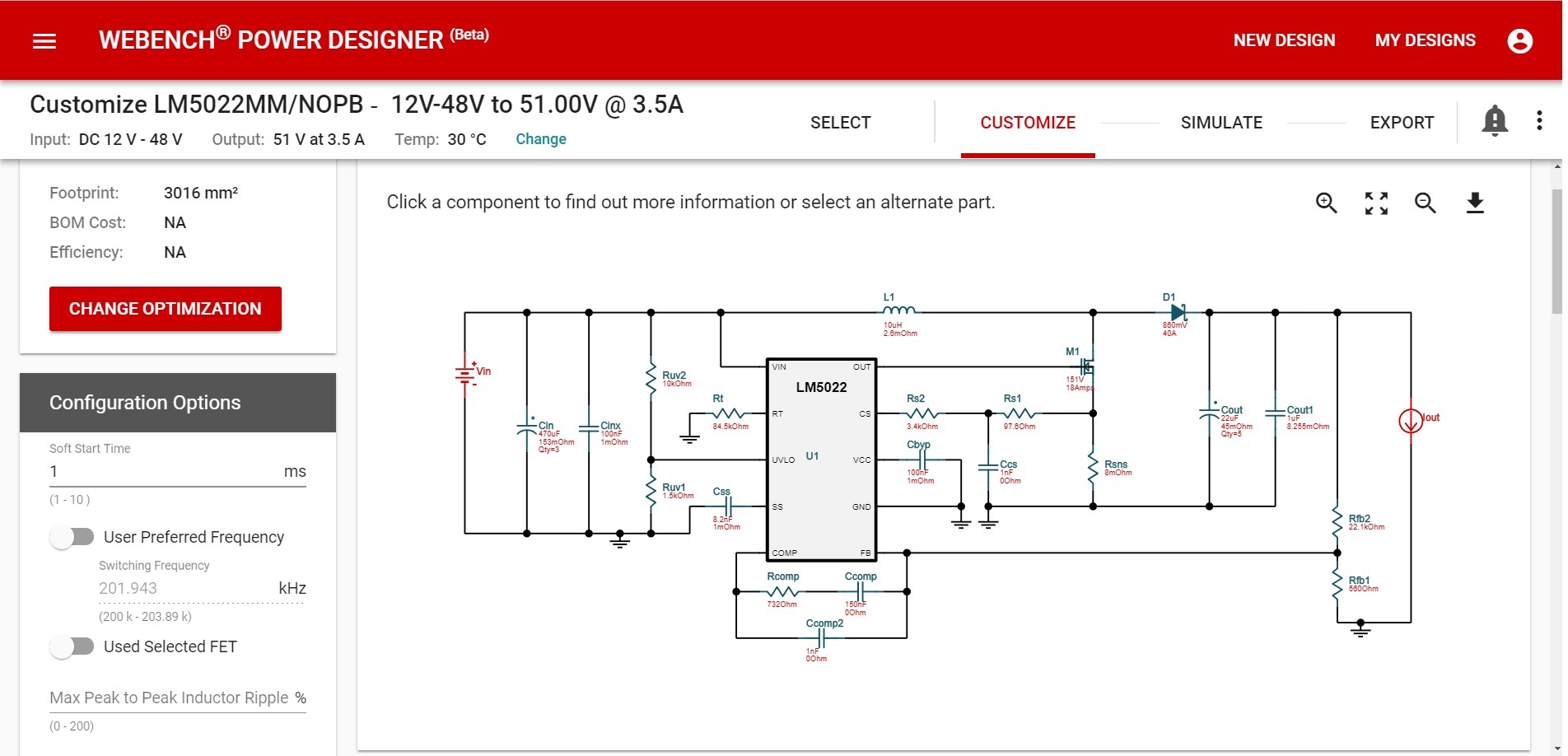Other Parts Discussed in Thread: LM5122, LM5170
Tool/software: WEBENCH® Design Tools
Dear TI,
I have created a design using LM5022 for I/p 12-48VDC and O/p of 51V 3A. Now my question is if i just change the FET from 15A to some FET with 100A current can i use same design with some modification to get around 10A?
My design link is "https://webench.ti.com/appinfo/webench/scripts/SDP.cgi?ID=72ADA8915BDF7A48%22
If not can you help me what components i need to change to get my desired outputs? Deeply awaiting your reply.
Regards,
Vijay Gohil


